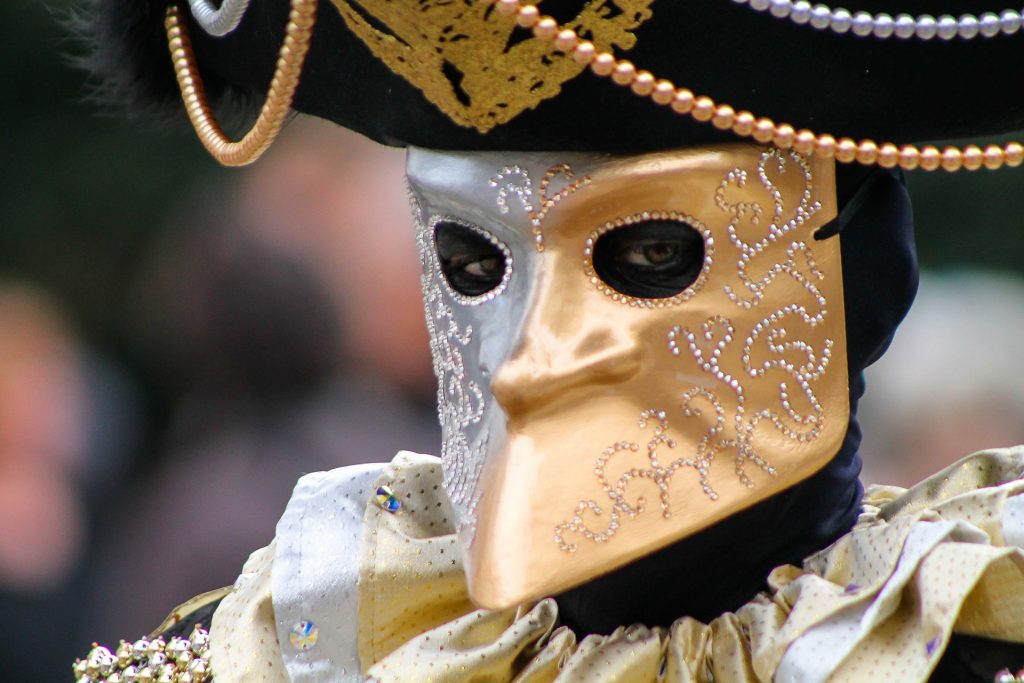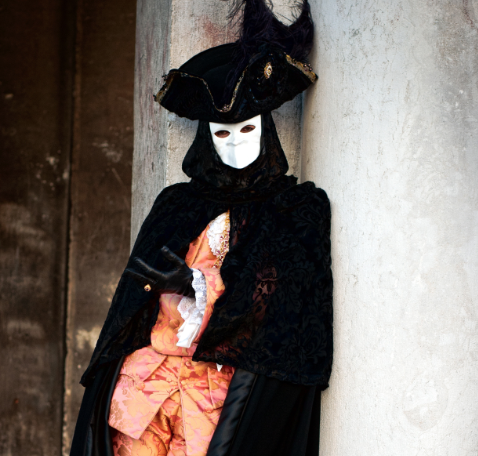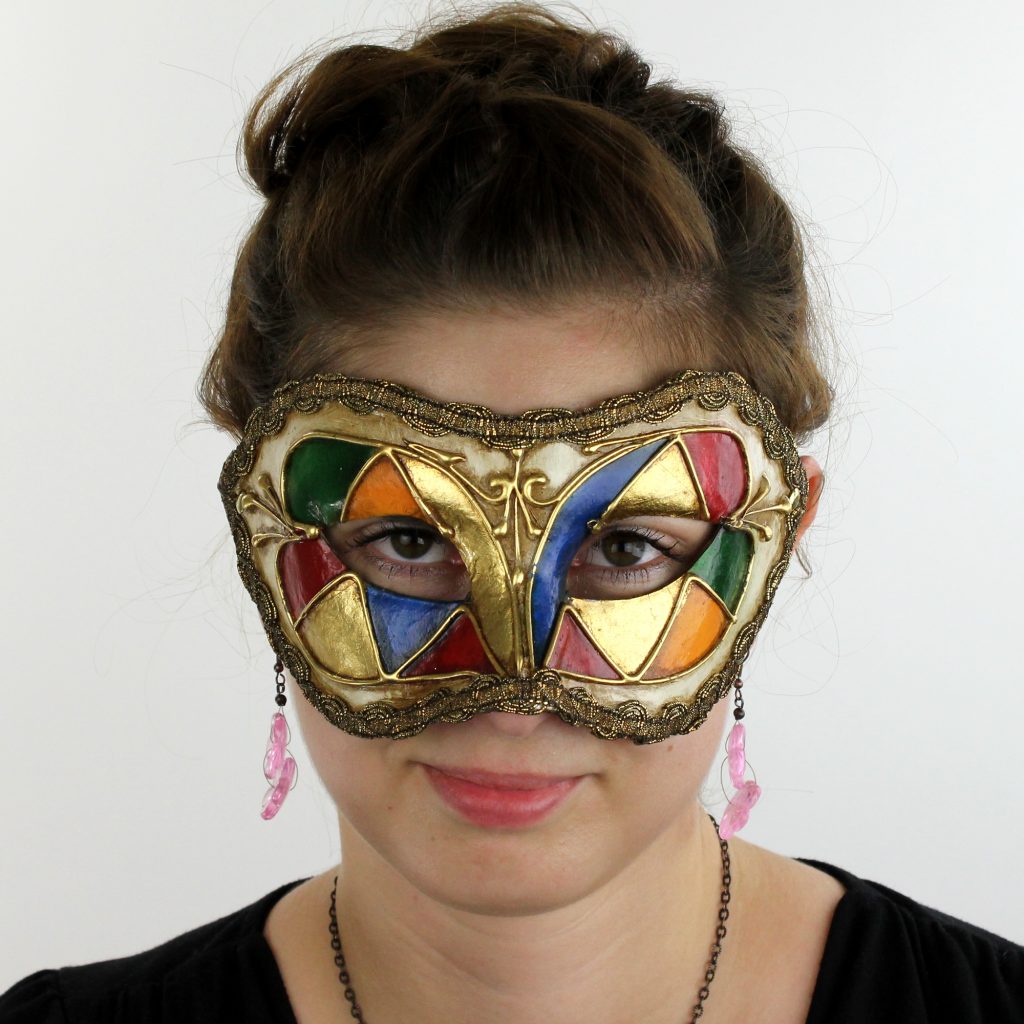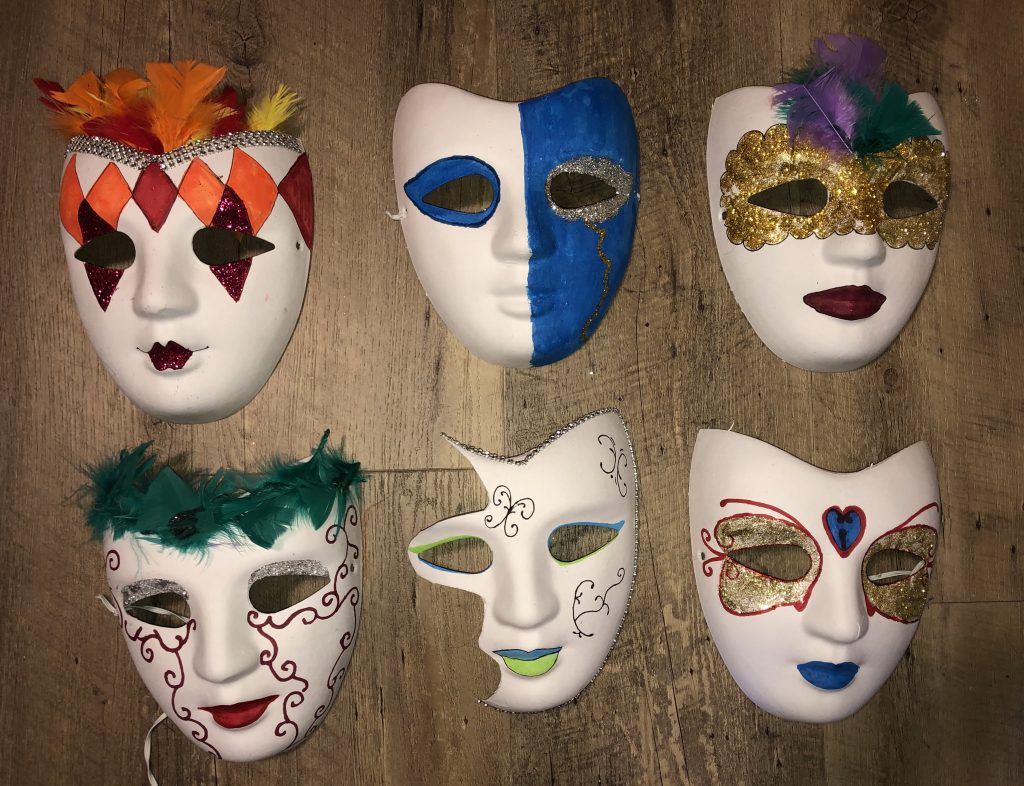History
Carnival in Venice is closely tied to the religious ritual known as Lent. This ritual is a part of the Catholic faith that requires followers to restrain from indulging in luxuries like partying, drinking, and eating meat in order to “replicate” the sacrifices Jesus made on his 40 day desert journey. Carnival is the celebration right before lent to spoil yourself with all the luxuries you are giving up for lent. This time period exists due to the difference in the dates of the Resurrection in the Romand and Jewish calendars. Due to the fact that this event falls on different weeks, there are days in which religious time does not exist. In this interval all religious restrictions and fasting traditions do not apply to the people. Therefore, there are numerous days of celebration and extravagant parties. Venice Carnival began in 1162 when townspeople decided to celebrate the victory over the Patriarch of Aquileia. The word Carnevale came from the latin words carne and vale which means “farewell to meat.”
The original Carnival lasted several weeks in the whole city so that everyone could take a moment away from their mundane daily profession and engage in music, dances and parties while barely working at all for the time being. This was also used as a method of social control in order to maintain a well functioning society. Giving people complete freedom reduces built up stress and emotion. Masks played such a large role in Venetian Carnival because it allowed people to conceal their identity and not be obstructed by their social class. This was a way for the Serene Republic of Venice to maintain order and power through the rest of the year.
During the start 18th century Carnival became famous internationally and was more popular than ever before. By the end of the 18th century Carnival was slowly fading away. The French were occupying the republic first and the Austrians took over towards the end foreboding anyone from wearing masks on a daily basis. This did not completely end Carnival but it was only celebrated in some parts of Italy. It took up until 1979 for Carnival to be restored to its original beauty.

Masks and Costumes
Early Venetian masks were simple and served a practical purpose. Originally they were made of leather, porcelain, or glass but now can be found made from paper mache or plastic and produced by American factories. The masks and costumes of Carnival represent spirits and “gods” of the forest which often was also associated with satyrs and demons. Since religion did not exist within this time period, these characters which are usually shunned and repressed are able to come out. Some of these savage masks were later adopted and used by theater. In addition, the masks served as a bridge to equality. The costumes and masks covered the identity of individuals and created a sense of freedom among all people. In fact, to ensure equality and the interaction between the social classes, people greeted each other by saying “hello mask” instead of each other’s names. Even small babies were masked while being held in their mother’s arms.
Bauta
The bauta is a mask painted completely white and is used to cover and “protect” the entire face. It has a large protruding nose and no mouth, but enough room underneath for the person wearing it to talk and eat without taking off the mask and revealing their identity. In 18th century Venice, the bauta was worn during political events to conceal the identity of those in charge of the decision-making. The bauta is still a popular mask worn during Carnival in Venice, today.

Medico Della Peste
Translated to “The Plague Doctor,” this mask was created by 17th-century French physician Charles de Lorme. He adopted the mask for sanitary precautions while treating plague victims. The birdlike mask was not worn by Carnival goers in 17th and 18th century Venice, only by doctors. In time, the mask became a popular Carnival mask, decorated in crystals and worn as a memento mori, a remembrance of their mortality.

Volto (Larva)
The volto or larva mask is one of the most iconic Venetian masks worn during Carnival. The “volto” or “larva” mask is originally a white mask worn with a three cornered hat. The term “larva” refers to “ghosts” and the white masks seemed to eerie in the moonlight. This mask was worn by both men and women and the original masks did not cover the entire face, but allowed the wearer to drink, eat, and talk.

Colombina
Colombina means “little dove” in Italian. This mask is almost always worn by women. It is a half-mask only surrounding the eyes and covering the cheek bones, gilded with feathers, gold or silver detail, crystals, and feathers. The mask comes from Commedia dell’arte, which is an improvised kind of popular comedy in Italian theaters in the 16th–18th centuries, based on stock characters. The first actress to perform in commedia dell’arte felt her face was much too beautiful to cover so she decided to wear the half-mask. The mask became a popular look during Carnival and is still popularly worn by women.

Moretta/Servetta muta
Meaning “dark one” or “mute servant woman,” this mask was a small, black velvet, oval mask worn by patrician women. The mask was just big enough to conceal a woman’s identity. The mask had no nose or mouth holes, just the eyes, and was held up by a button in the mouth, hence the meaning behind the “mute” aspect. The mask was seen as seductive because it only concealed a small portion of a woman’s face. 18th century Venetian woman wore these masks with a popular mode of fashion, “décolleté alla veneziana,” which accentuated the breasts and made women appear more attractive.

Pantalone
One of the most important characters in Commedia dell’arte, Pantalone is known to be very greedy because his character is at the top of the social order. Pantalone refers to “money” in the commedia world. Pantalone full name is “Pantalone de’ Bisognosi” which in English is translated to ‘Pantalone of the Needy.’ The mask is usually made with an oversized nose with high brows and slanted eyes. Pantalone is only half a mask and is typically worn by men.

Our Attempt at Creating a Venetian Carnival Mask
After researching Venetian masks and their important role in this particular carnival, we decided to attempt to create our own masks. Although we could not obtain a lot of the materials needed for making this product, we did our best to build modern masks that included the various colors and shapes seen in actual Venetian masks. Similar to the information presented above, each mask we made is unique and inhabits one or two ideas from each type of mask. After we finished making the masks, we realized just how much time, effort, and detail goes into making this piece of costume. We recognize that our masks are still quite simple, so the effort that goes into creating the art of the actual masks deserves tremendous respect and recognition. Overall, trying to imitate Venetian masks in our own way was quite interesting and enjoyable. We used materials such as feathers, glitter, paint, and jewels to construct unique designs. We learned that there is no right way to create a mask as long as there is color and creativity.
Parade
Today, Carnival last a couple of weeks but the most important days of the parade are between the last Thursday and the very last Tuesday. These two days are called Giovedi Grasso and Martedi Grasso which mean ‘fat Thursday’ and ‘fat Tuesday.’ During these weeks you see people along the streets wearing masks and having the best time because this is when they forget all about their stress and just celebrate before the forty days of lent start. On the last Sunday and last Tuesday of Carnival, they bring a big wooden stage to host the award ceremony for the people with the best mask costume.
The Festa Veneziana opens the carnival with lit structures floating down the Rio di Cannaregio. This part of the parade is split into two parts, the latter which is the Venetian Festival on the water. This is one of the most exciting events and people say if you can only celebrate for a day they advise you to pick this part of the celebration, because you can watch along the Grand Canal and look at all the masks and costumes while listening to music and eating Venetian street food. The Festa Delle Marie Parade recreates a historical Venetian beauty pageant. In the past, the Doge, which as the ancient rule of Venice would be represented with 12 women dressed in the most elegant fashions of their period. The winner of this contest would win a set of jewels which is to be used for their bridal dowry.
Flight of the Angel is one of the most popular and well known parades during this celebration. It takes place at noon in the Piazza San Marco. An acrobat is dressed as an angel and leaps off of the top of the San Marco bell tower and flies through the air to land in the square below. This event gets so packed they advise people to get there no later than an hour before if you want to get a spot where you can see it happen.
Conclusion
Based off of the growth of Carnival in the 18th Century, Carnival is continuing to flourish in Venice. Carnival is different all over the globe. In Italy, there is a greater emphasis on the beauty of the mask, which is why we wanted to go in depth about their masks. Tourists who come during the time of Carnival are expected to enjoy a large celebration before lent, just like in other countries. What sets Carnival in Venice apart from other carnival celebrations is that Venice also utilizes Carnival to celebrate their victories. Rather than just a pre-lent celebration, Carnival became a celebration of Venice as a victorious state. While the masks are unique to Venetian culture, it is important to see more than just a beautiful mask when attending Carnival in Venice. In conclusion, when taking a closer look on Venetian Carnival, one must not just see it as any other Carnival celebration from around the world. Carnival in Venice is true to Venetian culture and celebrates the natives pride in Venice.
Works Cited
“History of the Venice Carnival Masks.” Luxe Adventure Traveler, 4 Feb. 2013, https://luxeadventuretraveler.com/history-venice-carnival-mask/.
Bonadonna, Ester. “The Carnival Of Venice And Its Traditional Masks.” Culture Trip, https://theculturetrip.com/europe/italy/articles/the-carnival-of-venice-and-its-traditional-masks/. Accessed 26 Mar. 2019.
Masks, Home ». All Articles ». Venice ». All About Carnival in Venice: Venetian, and More! “All About Carnival in Venice: Venetian Masks and More!” Walks of Italy Blog, 27 Jan. 2013, https://www.walksofitaly.com/blog/venice/all-about-carnival-in-venice-venetian-masks-and-more.
“Venice Carnival :: History of the Carnival.” SITE, https://venice-carnival-italy.com/services-2/history-venice-carnival. Accessed 26 Mar. 2019.
“Carnival in Italy.” Charming, 27 Nov. 2013, https://www.charmingitaly.com/article/carnival-in-italy.
CARPENTER, SARAH. “Women and Carnival Masking.” Records of Early English Drama, vol. 21, no. 2, 1996, pp. 9–16. JSTOR, www.jstor.org/stable/43505418.
Images
“Carnival of Venice.” Wikipedia, 1 Apr. 2019. Wikipedia, https://en.wikipedia.org/w/index.php?title=Carnival_of_Venice&oldid=890486041.
Free Image on Pixabay – Mask, Carnival, Venice. https://pixabay.com/photos/mask-carnival-venice-venetian-mask-3774605/. Accessed 23 Apr. 2019.
Wellcrafted. Čeština: Tato Škraboška s Barevným Vzorem (Colombina Arlecchino Multicolore ) Je Vyráběna v Rodinné Manufaktuře v Benátkách. Zakoupena v Obchodě Www.Mysticum.Cz. 25 July 2012. Own work, Wikimedia Commons, https://commons.wikimedia.org/wiki/File:Ben%C3%A1tsk%C3%A1_%C5%A1krabo%C5%A1ka_s_barevn%C3%BDm_vzorem.JPG.
https://upload.wikimedia.org/wikipedia/commons/5/5c/Venetian_carnival_costume_Venice_1.jpg
Free Image on Pixabay – Venice, Carnival, Mask, Men’S. https://pixabay.com/photos/venice-carnival-mask-men-s-italy-279670/. Accessed 23 Apr. 2019.
Image: Venetian Carnival Masks: Who’s Who – Laura Morelli: Art History …https://www.google.com/imgres?imgurl=https://lauramorelliphd.files.wordpress.com/2015/02/ch-5-1-mask-c2a9-gloria-guglielmo-fotolia_30442110_xl.jpg&imgrefurl=https://lauramorelli.com/venetian-carnival-masks-whos-who/&docid=OGZEwmegksmIzM&tbnid=DgaMkk1bk8VdCM:&vet=1&w=2592&h=3888&source=sh/x/im. Accessed 23 Apr. 2019.
Video
Emo Col Ciuffo. Venice Carnival – Masks Parade. YouTube, https://www.youtube.com/watch?v=xI2IgpXX8KA. Accessed 26 Mar. 2019.
Emo Col Ciuffo. Venice Carnival – Masks Parade. YouTube, https://www.youtube.com/watch?v=xI2IgpXX8KA. Accessed 23 Apr. 2019.

